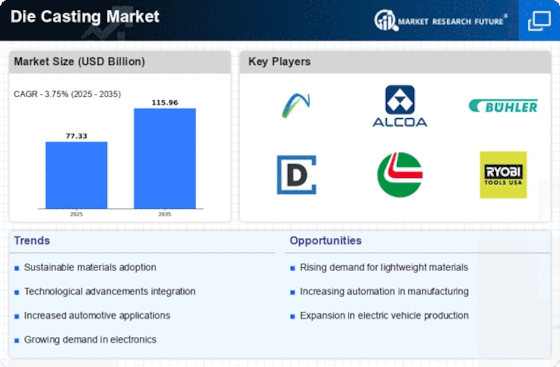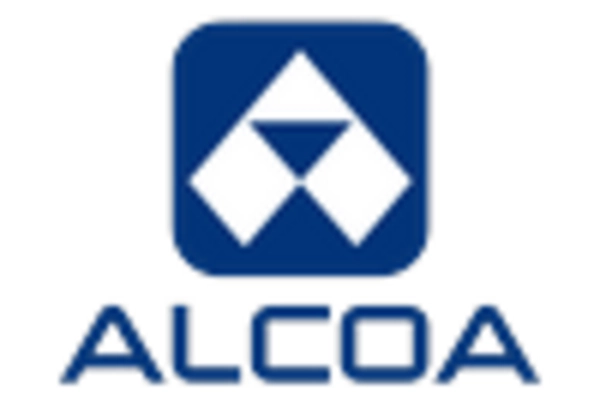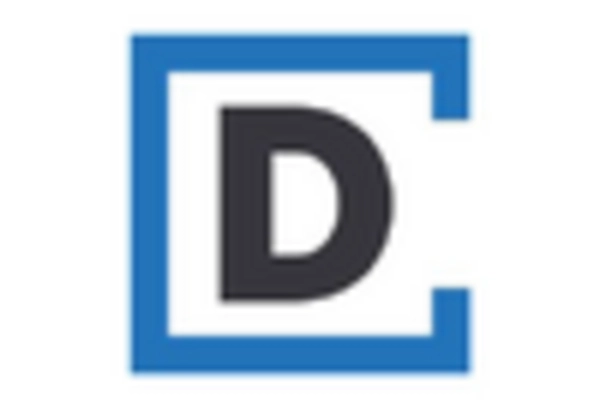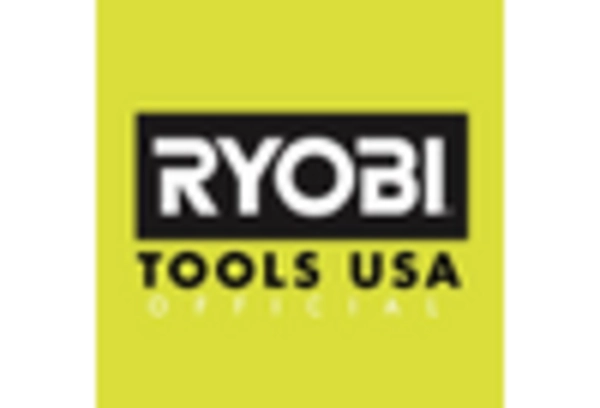Sustainability Initiatives
Sustainability initiatives are becoming increasingly pivotal within the Die Casting Market. As environmental regulations tighten, manufacturers are compelled to adopt eco-friendly practices. This includes the use of recyclable materials and energy-efficient processes, which not only comply with regulations but also appeal to environmentally conscious consumers. The market is witnessing a shift towards sustainable die casting methods, which could potentially reduce carbon footprints significantly. Furthermore, companies that prioritize sustainability may gain a competitive edge, as consumers increasingly favor brands that demonstrate environmental responsibility. The emphasis on sustainability is likely to reshape the landscape of the Die Casting Market, driving innovation and attracting investment.
Diverse Applications Across Industries
The versatility of die casting is a key driver for the Die Casting Market, as it finds applications across a multitude of sectors. From automotive components to consumer electronics, the ability to produce complex shapes with high precision makes die casting an attractive manufacturing method. The automotive industry, in particular, is a significant contributor, with a projected demand for die-cast parts expected to reach 10 million units by 2026. Additionally, the growing demand for lightweight materials in aerospace and electronics is further propelling the market. This diverse applicability not only enhances the resilience of the Die Casting Market but also encourages innovation in product design and manufacturing techniques.
Rising Demand for Lightweight Materials
The increasing demand for lightweight materials is significantly influencing the Die Casting Market. Industries such as automotive and aerospace are actively seeking to reduce vehicle weight to improve fuel efficiency and performance. Die casting offers a viable solution by enabling the production of lightweight yet durable components. The market for aluminum die casting, in particular, is expected to witness substantial growth, driven by its favorable properties. Analysts project that the demand for aluminum die-cast parts will increase by approximately 6% annually over the next five years. This trend not only supports the growth of the Die Casting Market but also aligns with broader industry goals of sustainability and efficiency.
Investment in Infrastructure Development
Investment in infrastructure development is emerging as a crucial driver for the Die Casting Market. As countries prioritize modernization and expansion of infrastructure, the demand for construction materials and components is surging. Die casting plays a vital role in providing high-quality parts for various infrastructure projects, including bridges, buildings, and transportation systems. The market is likely to benefit from government initiatives aimed at enhancing infrastructure, with projected spending expected to reach trillions in the coming years. This influx of investment not only stimulates demand for die-cast products but also fosters innovation within the Die Casting Market, as manufacturers seek to meet the evolving needs of infrastructure projects.
Technological Advancements in Die Casting
The Die Casting Market is experiencing a notable transformation due to rapid technological advancements. Innovations such as improved die materials and enhanced automation processes are driving efficiency and precision in production. The integration of Industry 4.0 technologies, including IoT and AI, is enabling manufacturers to optimize operations and reduce waste. As a result, the market is projected to grow at a compound annual growth rate of approximately 5.2% over the next few years. These advancements not only enhance product quality but also reduce lead times, making die casting a more attractive option for various industries, including automotive and aerospace. The ongoing research and development efforts in this sector suggest a promising future for the Die Casting Market.

















Leave a Comment